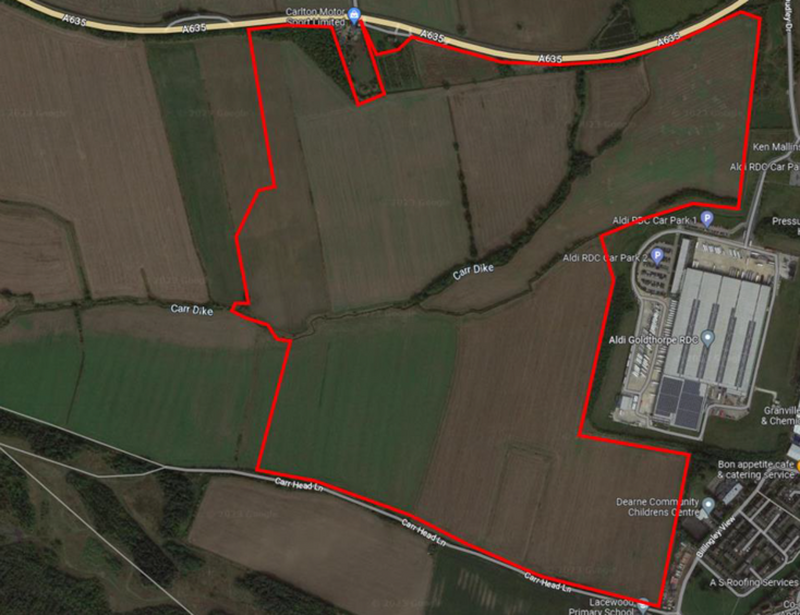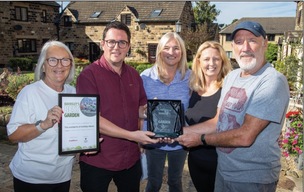DEVELOPING land synonymous with the resurgence of wildlife near reclaimed ex-mining sites must be scaled back in order to ‘protect’ flourishing populations of bird species which call Barnsley’s wetlands their home, conservationists have urged.
A string of Dearne Valley wetlands - most notably Billingley Ings - have come under the spotlight since a planning application for warehouses was submitted to Barnsley Council before Christmas.
Newlands Developments want to build four venues on a 211-acre site off Barnsley Road, Goldthorpe, which effectively cuts through the nature reserve along Carr Dike’s path.
Identified as ‘ES10’ in the council’s local plan development blueprint, the application suggests the largest warehouse would also neighbour RSPB Old Moor, a celebrated area for conservation which has become a hotbed from breeding pairs of the once-rare marsh harrier.
Wildlife campaigners have called for action - and urged the council to put up a tougher stance with developers in order to protect the town’s green spaces as a decision looms.
Conservationist Chris Needham, from Darfield, said: “In 1970 I heard that a marsh harrier had been seen on Bolton Ings near Bolton-upon-Dearne.
“Marsh harriers are large birds of prey that, as their name suggests, inhabit areas of marsh and swamp.
“Due to the effects of farming pesticides, there was only one pair breeding in the whole of Britain at that time.
“I couldn’t believe that such a rare bird had turned up on Bolton Ings which was part of my local bird-watching patch.
“No-one could have imagined that just decades later these wonderful, elegant birds of prey would actually be breeding here.
“Indeed, over the years, they have grown to be one of the key attractions at RSPB Old Moor and continue to be a reliable source by which we can gauge the health of our environment.
“While these birds are nesting at Old Moor they visit nearby Billingley Ings looking for voles and other small items of prey to feed their young.
“Billingley Ings is a relatively flat area of land and as such flat areas - especially near main roads - attract the attention of local authority planners looking to build more warehouses.
“A new roundabout has been built along the A635 Barnsley Road and about half of Billingley Ings is set to be lost to development.
“This area of land, which is not only a good place for marsh harriers but also an important place for other wetland birds, is to be built on.
We cannot keep building large warehouses in Barnsley and hoping things will change.”
If granted approval, the scheme would generate approximately 1,200 direct long-term jobs in a diverse range of positions, in addition to an estimated 1,350 direct jobs during the construction phase.
Chris added: “Of course we need more accessible jobs in Barnsley and the Dearne Valley, but if we are to get away from low-paid jobs within the borough then we need to improve our amenities and protect our environment.
“There are two nationally-important bird areas within the Barnsley district and they’re the moors above the town and the lower Dearne Valley wetland system.
“Billingley Ings is an important part of that and Barnsley Council knew that.
“There is a myriad of other sites that are more suitable for development within the district so this, in my book, can only be described as lazy decision-making.
People that are looking for quality jobs also want to live in a quality environment, a place where they can go for a walk and see a wealth of birds.”
Newlands Developments - the firm which was also responsible for building at Hoyland West - vowed to protect the environment.
A spokesperson said: “We take a long-term interest in our sites while working closely with occupiers to ensure stewardship and legacy.
“Carr Dike will be retained as part of the proposals.
“A qualified ecologist will advise us of a strategy to retain the green wildlife corridor running through the site, as well as achieve a minimum ten per cent increase in biodiversity net gain.
“We are working closely with Barnsley Council officers and other key stakeholders to ensure we provide a scheme, that is guided by the Goldthorpe masterplan framework, and benefits the local community through sustainable economic growth, whilst protecting the natural environment surrounding the site.”




























